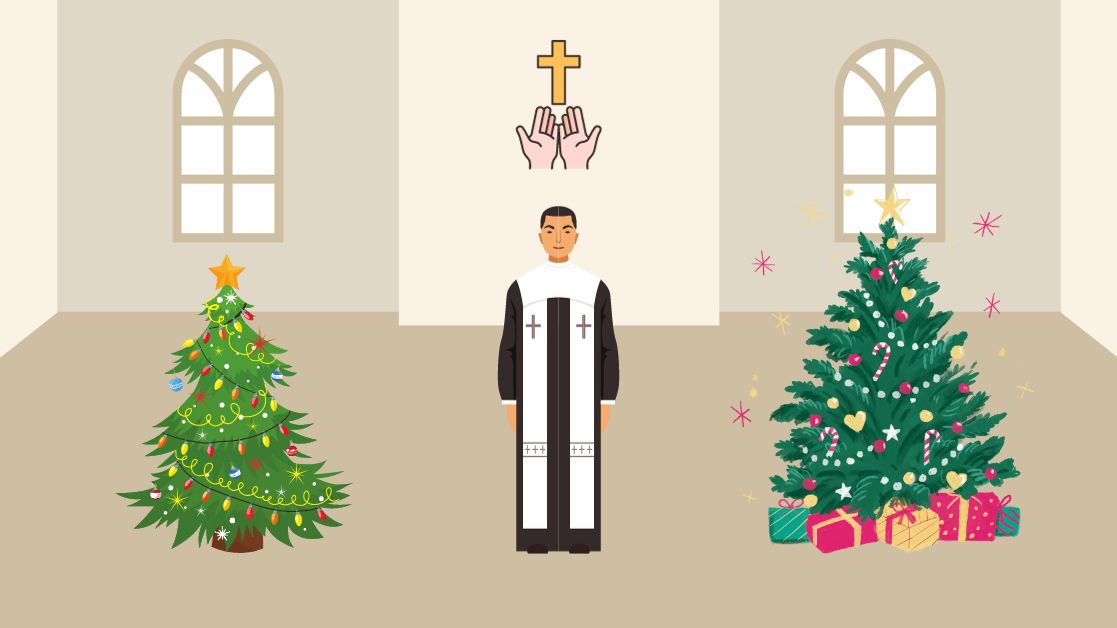As a pastor with over two decades of experience in shepherding my congregation, I have often been asked about the significance of Christmas trees in the context of our faith. It’s a question that stems from a genuine desire to ensure that our holiday celebrations align with the teachings of the Bible.
So, let’s delve into this topic and explore what the Bible says about Christmas trees.
When Did People Start Using Christmas Trees?
Contrary to some misconceptions, the modern custom of the Christmas tree doesn’t have its roots in paganism but is deeply embedded in historical events and beliefs.
The earliest hints of tree-related celebrations can be traced back to the Romans, who marked the winter solstice with Saturnalia, a festival dedicated to Saturnus, the God of agriculture. During Saturnalia, they adorned their homes with greens and illuminated them with lights, engaging in the exchange of gifts. It was a festive time that set a precedent for decorating during the winter season.
During the Middle Ages, Germans and Scandinavians began a practice that closely resembled the Christmas tree tradition as we know it today. They placed evergreen trees inside their homes or just outside their doors to symbolize hope for the coming spring. These trees served as a reminder that life would return to the barren landscape, and the harsh winter would eventually yield to the rebirth of nature.
The first recorded instance of a decorated Christmas tree emerged in 16th-century Germany among Protestant Christians. These early Christmas trees were adorned with simple decorations, such as candles, apples, and sometimes even roses. This event marked the official start of using the Christmas tree as a holiday season symbol.
What Does The Bible Say About Christmas Trees?
The Bible does not explicitly mention Christmas trees, as the holiday itself, as we know it today, was not celebrated when the Scriptures were written. However, trees draw valuable lessons and insights from the Word of God to guide our understanding and observance of Christmas traditions.
We are introduced to the Garden of Eden in Genesis 2:9 and Genesis 3:22, where the Tree of Life and the Tree of Knowledge of Good and Evil stand. These trees were central to the story of humanity’s relationship with God, highlighting the importance of our connection with the Creator through His creation.
In this sense, a Christmas tree can serve as an emblem of the beauty of God’s creation and the gift of His Son, Jesus, who came to reestablish our connection with Him.
What Does The Christmas Tree Symbolize in the Bible?
Many Christmas trees are evergreen, meaning they retain foliage throughout the year. This quality has symbolic significance. In the Bible, the evergreen can be seen as a representation of the eternal life that Christ offers to believers.
When we adorn our Christmas trees with lights, it can serve as a symbol of Christ, who is often referred to as the “Light of the World” (John 8:12). Just as the light of the candles or ornaments illuminates the darkness, Jesus brings light and hope into our lives. The Bible encourages us to walk in the light of Christ, shining His love to the world (1 John 1:7).
Christmas trees have become a cherished family tradition for many. The Bible emphasizes the importance of family and passing down faith from one generation to the next (Deuteronomy 6:7).
Decorating the Christmas tree together and sharing the story of Jesus’ birth can be a wonderful opportunity to strengthen the bonds of love within the family and instill a foundation of faith in the hearts of our children.
Bottom Line
Christmas trees can be a beautiful reminder of the spiritual truths we hold dear. However, it’s important to remember that the heart of Christmas is not in the decorations but in the profound message of God’s love for us, manifested in the birth of Jesus Christ. Our focus should always be on Him, the true reason for the season.
As we celebrate with Christmas trees and all the traditions that come with it, let us do so in a spirit of joy, gratitude, and reverence. May we use these symbols to deepen our understanding of Christ’s love, build stronger bonds with our families, and shine His light in a world that often needs it. In doing so, we honor the teachings of the Bible and fulfill our calling as followers of Jesus Christ.
RELATED: What Does Bible Say About Christmas? The Biblical Significance of Christmas




